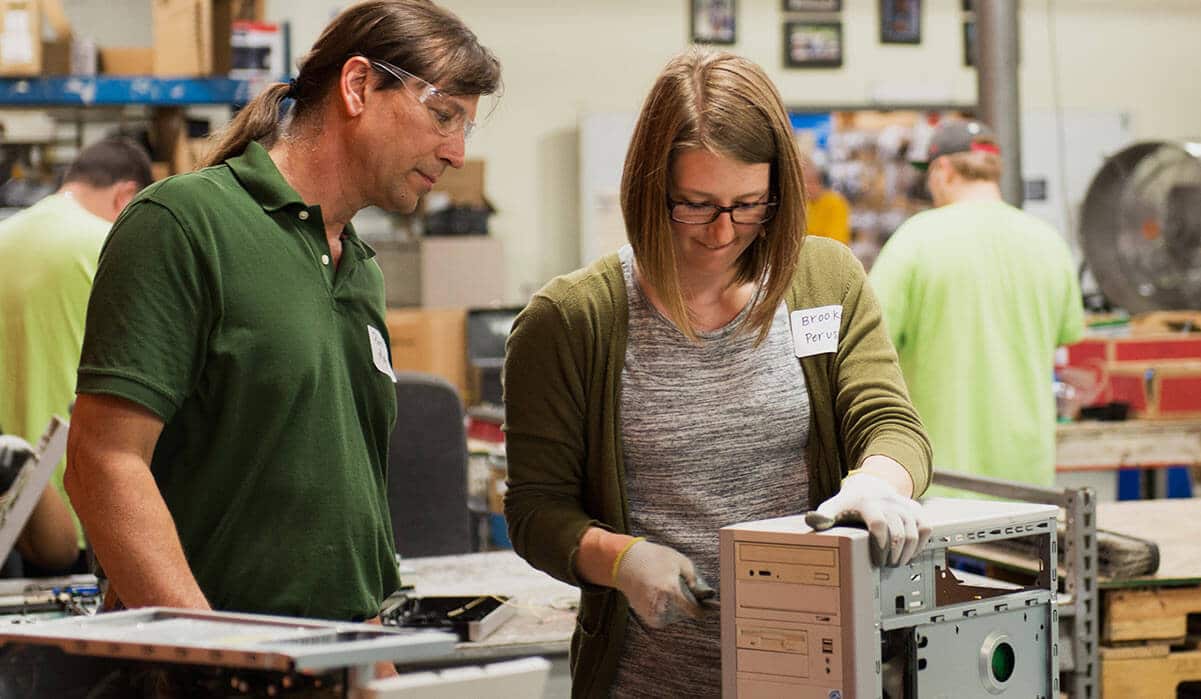Be a Change Agent for Recycling
October 11, 2018

Written By:
Travis Gibbs | Packaging Engineer

Most American’s are at least aware of the recycling efforts taking place around them every day. As a Packaging Engineer, I care deeply about how materials and packages are disposed of because of my passion in sustainability. Recycling is a growing global challenge. In January, China made changes regarding the types of waste materials they will accept due to concerns about the purity of the materials and the resulting environmental contamination from the mixed loads. Previously, China was the largest buyer of US plastic waste. These materials now must find another destination.
This decision by China has made a significant impact on the domestic-recycling industry. Without a source to receive these plastic materials, they have been piling up at recycling centers across the country. This has driven up the costs for recycling. Many recyclers are now forced to accept lower prices for their materials due to excess supply while others pay to have them dumped into a landfill. The trickle-down effect will impact individuals, and in some instances— it already has. The Colonial Clock Building in Zeeland (where DISHER headquarters is located) has recently stopped plastic-recycling waste. The Kent County Recycling and Education Center is increasing its tipping rates on January 1, 2019, to cover losses due to the reduced-commodity values. What’s the solution?
Be a Change Agent for Recycling
“They always say time changes things, but you actually have to change them yourself.” —Andy Warhol
What can we as individuals and organizations do about this mountain of plastic waste? Most of us desire to take responsibility and be good stewards of our environment. Here are some of my top recommendations from a packaging and consumer perspective.
Specify more recycled content.
Packaging Engineers and OEMs/brands have the control to specify the materials used for their packaging. Recycled content doesn’t work for every application, but brands like Seventh Generation and Method have found ways to incorporate 100% post-consumer recycled content into their packaging.
Reduce your plastic usage.
This can be done at home and in the workplace. Remember, there are often alternative choices to plastic packaging or products. Weigh the benefits of being able to more easily recycle that material. Corrugated, paperboard, molded pulp and other organic materials can deliver equal performance in some instances. Consider your consumption of single-use items and utilize reusable food and beverage containers.
Be more selective about your plastic choices.
The numbers on the bottom of your plastic containers aren’t just there for looks. They indicate the type of material the product or packaging is made from. Items with #1 (PET), #2 (HDPE), #4 (LDPE), and #5 (PP) are more easily recycled than #3 (PVC), #6 (PS), and #7 (Other).
Be ready to sort.
One of the great things about single-stream recycling is that it is easy for consumers to do. The bad part about single-stream recycling is that it is very difficult for recyclers to sort the items with value due largely to contamination. Some recyclers are already looking to push more of the sorting to consumers to offset the higher costs and lower values for the materials.
Without a doubt, there are significant hurdles ahead in our struggle to manage plastic waste and take ownership of our environment. Things will certainly continue to transform, but quite often— you have to be the change agent.
Written By: Travis Gibbs, Packaging Engineer
Travis is passionate about sustainability and all things mechanical. He brings over ten years of knowledge in packaging design, process and product improvements for manufacturing, and the packaging value chain. Travis received a BS in Packaging from Michigan State University. He also is a Certified Packaging Professional (CPP), a Six Sigma Greenbelt, and a board member for the West Michigan IoPP chapter. Travis has two kids and enjoys mountain biking and anything in the snow.


